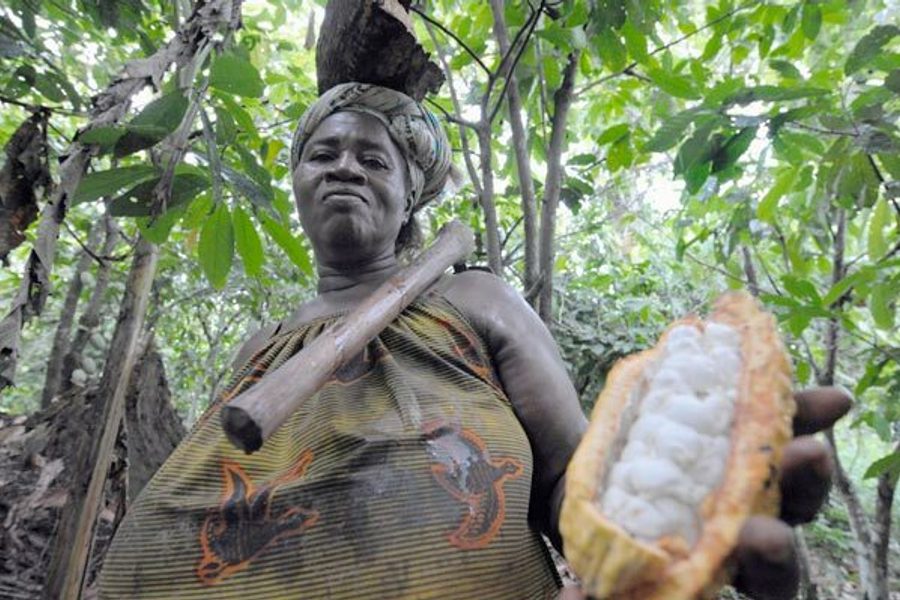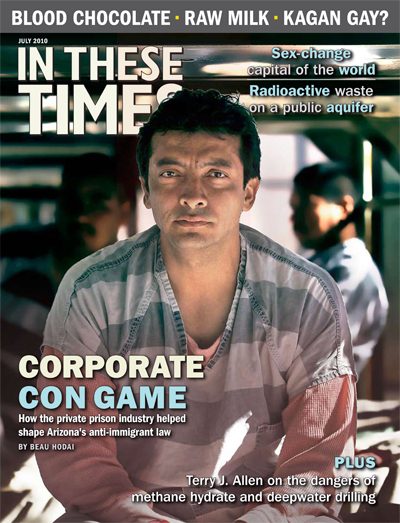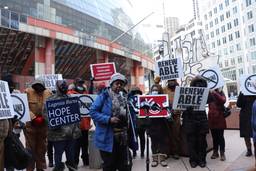
Conscientious consumers’ search for ethically sourced and manufactured products has expanded beyond diamonds, coffee and clothing to sweeter terrain: chocolate. After years of pressure, multinational candy companies are finally beginning to embrace the “ethical cocoa sourcing” movement – but to what degree and effect remains a matter of debate. Labor activists say manufacturers’ commitment to the seals of approval adorning chocolate bars is dubious, and the standards themselves are flawed.
Since the late 1990s, labor-rights organizations have been pressuring food companies to verify that their chocolate is not the product of child labor or slavery. Eighty percent of the world’s cocoa, the main ingredient of chocolate, is produced by millions of growers in the Ivory Coast and Ghana, according to the nonprofit CorpWatch.
In 2001, eight members of the Chocolate Manufacturers Association, including industry leaders Mars and Nestle, signed the non-binding Harkin-Engel “Cocoa Protocol” that committed the companies to eliminating the “worst of child labor” in West Africa. Participating manufacturers were supposed to have met the international agreement’s standards by 2005, but hundreds of thousands of children continue to work on cocoa plantations in Ghana and the Ivory Coast, according to a 2009 Tulane University study of the cocoa industry.
But last year, Mars and Cadbury announced their commitment to “ethical sourcing.” Mars, which makes Snickers and M&Ms and had $30 billion in global sales in 2008, has partnered with the Rainforest Alliance (RA) to ensure its entire cocoa supply – 100,000 tons – is “sustainably produced” by 2020. Mars’ Galaxy candy bar, popular in the United Kingdom, began bearing the Rainforest Alliance Certified™ green seal this year. The New York-based RA’s sustainable agriculture standards forbid child labor, except when children are part of the farm owner’s family.
But critics say RA standards aren’t tough enough to change an industry still rife with “blood chocolate,” and are instead a cheap way to tap into the ethical consumer market without a substantial change in business practices. Kyle Scheihagen, founder of the online advocacy group Stop Chocolate Slavery, says that since 2005 most large companies have produced only a few certified products to accommodate a small consumer demand. At the same time, Scheihagen says, they make their profit by “selling bad [exploitative] products. That just seems like a cynical approach.”
Labor organizations are dissatisfied with manufacturers’ moves, because “ethical sourcing” – a phrase chocolate companies use to market their products – doesn’t guarantee the better labor practices that are part of official “fairtrade” certification, which occurs though the Fairtrade Labelling Organizations (FLO) International and its 23 member agencies. “
“Fairtrade” and RA-certified products offer the same appeal to some consumers, but their production and content standards are very different. RA products are only required to contain 30 percent “certified content” – meaning that the majority of the product does not reach the organization’s standards. “Fairtrade” products must contain 100-percent certified content, and guarantee a minimum price to producers.
RA has asked its producers to scale-up their products to 100-percent certified content, but has not established a deadline. “We didn’t want to have a 100-percent requirement and be a deterrent to large companies,” says RA spokeswoman Abby Ray. (RA’s board of directors includes an executive chairman of Pinnacle Foods and an ex-CEO of Kraft.)
“There are some fundamental problems with Alliance guidelines,” says Tim Newman, an International Labor Rights Forum (ILRF) spokesman. RA does not require unionization of workers, and several RA-certified cut-flower farms have quashed workers’ attempts to unionize, he says. (Ray says that workers on RA-certified farms have “freedom of association.”)
Newman also faults RA for not requiring workers to be paid a living wage (instead RA-certified farms can be paid a wage comparable to surrounding farms). Newman says that RA standards don’t “provide a lot of incentive for a company to scale up” to better standards. Mars and Kraft did not respond to requests for comment.
Global labor rights researcher and activist Jeff Ballinger criticizes the certification model of both RA and FLO, saying if they really want to stop longstanding abuses like forced child labor, they need to pressure local governments to enforce laws, not just check up on farms periodically. “They aren’t [bulletproof] practices by any means,” Ballinger says. “Pressuring governments is the way to go.”

I hope you found this article important. Before you leave, I want to ask you to consider supporting our work with a donation. In These Times needs readers like you to help sustain our mission. We don’t depend on—or want—corporate advertising or deep-pocketed billionaires to fund our journalism. We’re supported by you, the reader, so we can focus on covering the issues that matter most to the progressive movement without fear or compromise.
Our work isn’t hidden behind a paywall because of people like you who support our journalism. We want to keep it that way. If you value the work we do and the movements we cover, please consider donating to In These Times.





